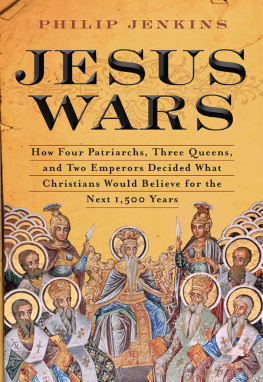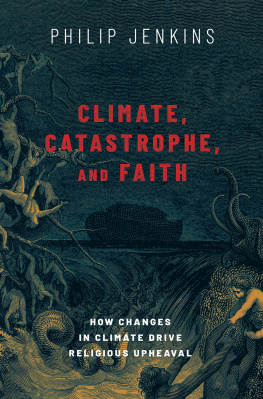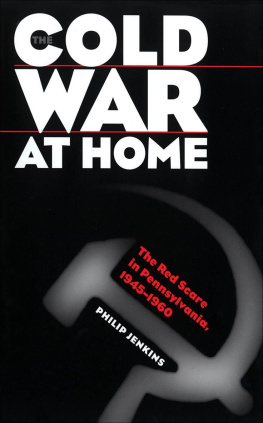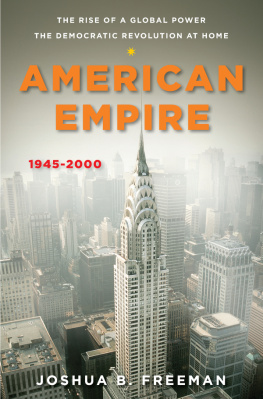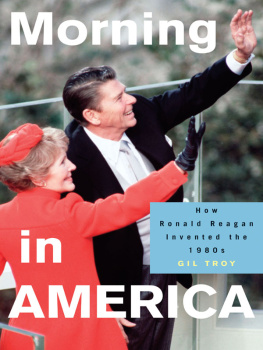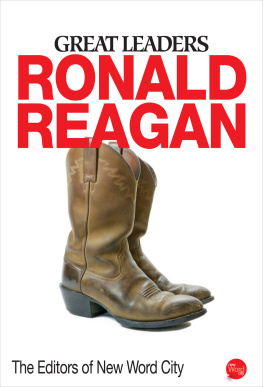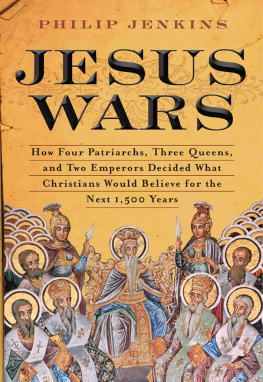Decade of Nightmares
Also by Philip Jenkins
Dream Catchers: How Mainstream America Discovered Native Spirituality
The New Anti-Catholicism: The Last Acceptable Prejudice
Images of Terror: What We Can and Cant Know About Terrorism
The Next Christendom: The Coming of Global Christianity
Beyond Tolerance: Child Pornography on the Internet
Hidden Gospels: How the Search for Jesus Lost Its Way
Mystics and Messiahs: Cults and New Religions in American History
The Cold War at Home: The Red Scare in Pennsylvania 19451960
Synthetic Panics: The Politics of Designer Drugs
Moral Panic: Changing Concepts of the Child Molester in Modern America
A History of the United States
Hoods and Shirts: The Extreme Right in Pennsylvania 19251950
Pedophiles and Priests: Anatomy of a Contemporary Crisis
Using Murder: The Social Construction of Serial Homicide
Intimate Enemies: Moral Panics in Contemporary Great Britain
A History of Modern Wales 15361990
Crime and Justice: Issues and Ideas
The Making of a Ruling Class: The Glamorgan Gentry 16401790

Oxford University Press, Inc., publishes works that further
Oxford Universitys objective of excellence
in research, scholarship, and education.
Oxford New York
Auckland Cape Town Dar es Salaam Hong Kong Karachi
Kuala Lumpur Madrid Melbourne Mexico City Nairobi
New Delhi Shanghai Taipei Toronto
With offices in
Argentina Austria Brazil Chile Czech Republic France Greece
Guatemala Hungary Italy Japan Poland Portugal Singapore
South Korea Switzerland Thailand Turkey Ukraine Vietnam
Copyright 2006 by Philip Jenkins
Published by Oxford University Press, Inc.
198 Madison Avenue, New York, New York 10016
www.oup.com
Oxford is a registered trademark of Oxford University Press
All rights reserved. No part of this publication may be reproduced, stored in a retrieval system, or transmitted, in any form or by any means, electronic, mechanical, photocopying, recording, or otherwise, without the prior permission of Oxford University Press.
Library of Congress Cataloging-in-Publication Data
Jenkins, Philip, 1952
Decade of nightmares: the end of the sixties and the
making of eighties America / Philip Jenkins.
p. cm.
Includes bibliographical references and index.
ISBN-13: 978-0-19-517866-1
ISBN-10: 0-19-517866-1
1. United StatesHistory1969.
2. United StatesHistory19611969.
3. United StatesPolitics and government19451989.
4. United StatesSocial conditions1945.
5. Social problemsUnited StatesHistory20th century.
6. Culture conflictUnited StatesHistory20th century.
7. ConservatismUnited StatesHistory20th century.
8. Political cultureUnited StatesHistory20th century.
I. Title.
E839.J46 2006 973.92dc22 2005020159
1 3 5 7 9 8 6 4 2
Printed in the United States of America
on acid-free paper
To Liz
Contents
Introduction
Imagine a Rip van Winkle who fell asleep in 1970 or 1974 and reawakened in the mid-1980s. Studying the torrent of media images, he tries to make sense of the new world, to understand which side emerged victorious from the social conflicts of his day.
He is startled by how thoroughly conservative interests seem to have triumphed. Ronald Reagan is an immensely popular president who has won a second term by a landslide. Across the political landscape, so many of the controversies of the 1960s have been carried definitively by the right. In foreign affairs, the confrontational anti-Communist rhetoric harks back to the time of John Foster Dulles or Barry Goldwater. Even Goldwater, in fact, is attacking the CIA for going too far in attempting to overthrow the leftist regime in Nicaragua. Americas leaders speak the hard-core language of captive nations and slave states, of the need to roll back Communism. The United States is ostentatiously building up its military, with a strong emphasis on nuclear arms, and is contemplating space-based warfare. As in the 1950s, Americans are alarmed by threats from enemies within, and not only from spies and subversives. Islamist terrorists threaten devastating attacks on U.S. soil. Domestically, a ferocious drug war is making dramatic inroads into civil liberties, and few are willing to speak publicly against the simplistic Just Say No ideology. Many states have restored capital punishment, which most thought gone for good in the early 1970s. News stories about raids on crack houses are intercut with arrests of domestic terrorist cells. The imagery suggests a nation under siege.
With some obvious exceptions, sixties values went down to defeat. The revolution failed.
Matters would be more ambiguous if our sleeper woke up in 2006. Initially, he might conclude that the radical movements of his own time had succeeded. Everywhere, he sees signs of impressive feminist advances. Abortion is freely available. Women hold senior positions in business and government, and one prominent woman is widely discussed as a likely future president. The extent of racial change is just as evident. Two successive secretaries of state have been African-American, and in a Republican administration. The slightest hint of the kind of segregation that was once commonplace now meets with massive public condemnation, not to mention lawsuits. Openly gay characters proliferate in the media, while gay marriage is a leading political issue. The Democratic candidate in the most recent presidential race was a former leader of Vietnam Veterans Against the War.
Yet, looking closer, the sleeper sees that the tone of political debate is strikingly conservative. In the 2004 presidential election, issues of family and sexual morality, of abortion and gay marriage, proved very contentious, and mobilization around these themes gave conservatives a decisive electoral edge. Even among liberal politicians, few advocate the kind of welfare policies that were popular in the 1960s, and free enterprise capitalism rules unchallenged. It was a recent Democratic president who proclaimed that the era of big government is over, and boasted of eliminating welfare as we know it.damaging charge was rather that he had exaggerated his credentials as a war hero. And, astonishingly, Communism really has been rolled back, without provoking a global holocaust.
Also conservative is the new social consensus on crime and deviant behavior. Liberals and conservatives vie to impose the harshest penalties on offenders, who are imprisoned with little recourse to the alternative kinds of correction proposed a generation before. In comparison with the late 1960s, this looks like a deeply punitive society, by far the most prisonoriented of any advanced state. And far from drug use having become accepted and normal, an absolute consensus now forbids discussing any relaxation of legal prohibition. Whether dealing with drugs or sexuality, foreign policy or military action, this new society frames its problems in terms of moral absolutes, of dangerous, evil outsiders who can be identified and combated.
The Big Chill
Most would agree that the decade of the 1960s transformed American life, and to that extent, the decade deserves its legendary status.
But just as evidently, the reform currents of the 1960s were challenged and in some important ways reversed in the following years. A modern American transported to the early 1970s would be looking at a radically different society, not just in terms of dress and hairstyles but also in social and political commonplaces. For better or worse, the world of the mid-1980s
Depending on our values, we can view this movement in different ways. Idealizing the 1960s, many baby boomers see the change in terms of a fading idealism. The elegiac movie
Next page

